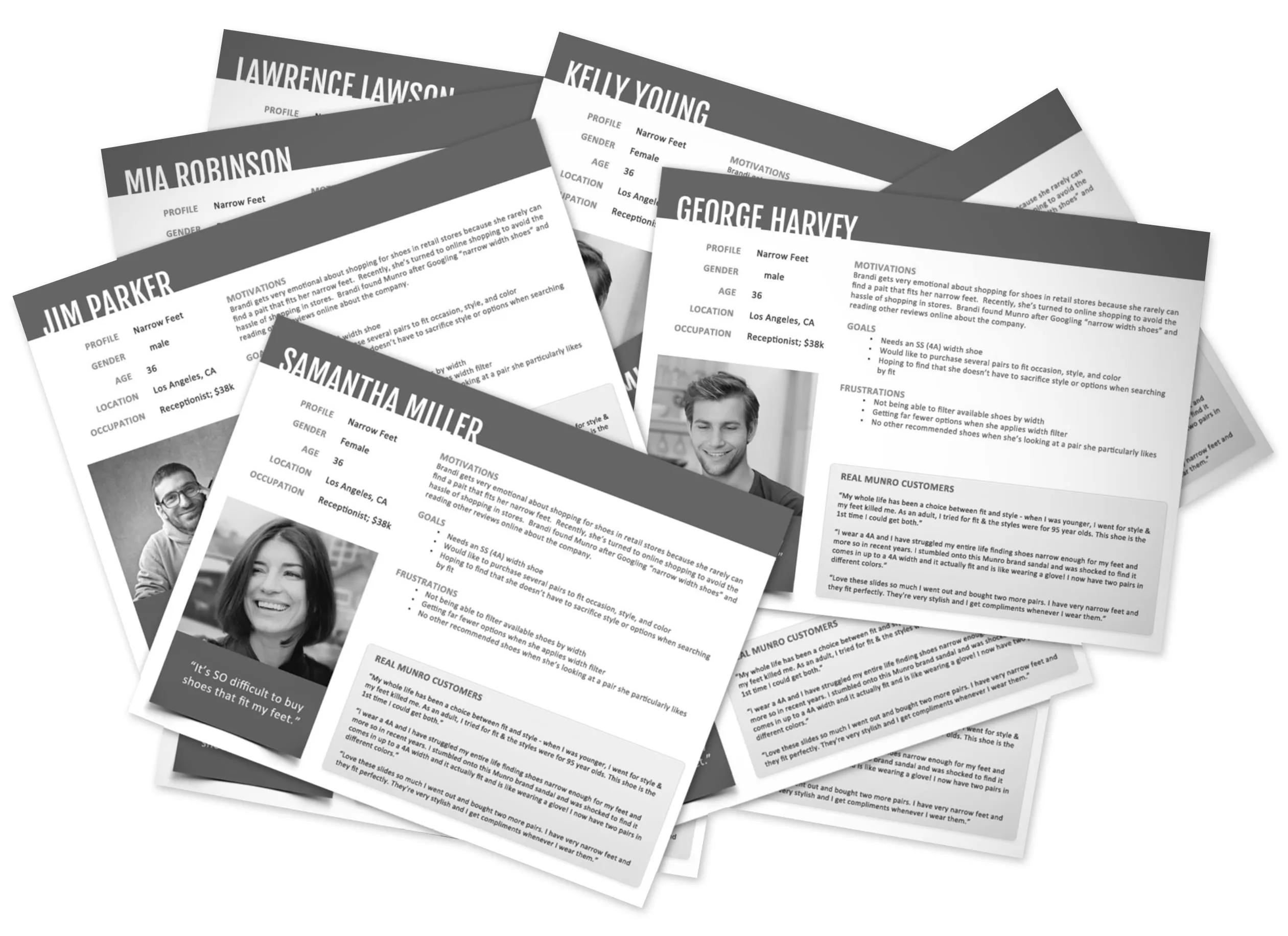
Lean Startup Adventure, day 8: designing Personas

Based on the problem interviews with potential customers, we now have a better understanding of our customer segment, and the pain points they’re dealing with. It’s time to summarize all the knowledge we’ve gathered into a shareable customer description, a Persona.
What Is A Persona
The Persona technique is used by marketers, UX designers, and IT developers.
A persona consists in a fictive person that is supposed to represent a group of users sharing the same characteristics and behaviors. This fictive person is described with some attributes observed in the focus group we want to model.
In other words, creating Personas obliges you to ask yourself who is your customer. It also helps you to focus on their characteristics and listen to their needs while building something for them. It also results in a better knowledge of who your product or service is made for.
Thanks to this profile and its attributes, teams are able to create experience scenarios on a product or service that will better fit to real users or real customers of the focus group.
The Persona is also a great communication tool for the product team. It’s easier to memorize, speak about, and picture Aaron, Bianca, or Charles, than it is to work for “The CIOs of SMEs in the Health Industry”, “Young Mothers With Lots of Pictures to Share”, or “Wannabe DJ With A Large Vinyl Collection”.
Lastly, focusing on one persona instead of a category of people facilitates a customer-centric approach. It’s easier to see if the product fits the needs of Aaron, than to see if it fits the needs of a customer segment. And if the persona is well laid out, there should be many similar people sharing the same characteristics - and the same appetite for the product you build.
What a Persona Looks like
A Persona is usually a short bio, accompanied by an avatar. Name, genre, age, occupation, hair color are common items in a Persona description. Also, anything that can create empathy is good, so don’t hesitate to add a few personal details or anecdotes (if you care for someone, you will pay extra care to the service you’re providing to them).

A Persona doesn’t need to be long, but it should be distinctive enough so that everyone in the team can remember the important details just by the name.
The best personas are the ones who actually exist: if you met a customer who is typical of your customer segment, use their name and description.
So, if you want to build personas, you have to take care to describe first what defines the person, and then to specify all the informations that matters for your project or product, like concerns, needs, objectives, but also environment characteristics.
Check this article that describes step-by-step how to build personas.
You can also watch this video that emphasizes the amount of work to do before creating you personas, because personas is the result of the analysis of your customers - not only their needs, but also their characteristics - analysis that may allow you to group them and/or differentiate them in another persona.
YouTube might track you and we would rather have your consent before loading this video.
The Difference Between Marketing And UX Personas
Marketing persona will focus more in demographics and buying preferences when UX personas will focus on user goals and observed behaviors.
In both worlds, knowing your customers better may result in multiple personas. That is a way to achieve your customer segmentation. Customer segmentation is key, because you will communicate differently to your various segments instead of having a general communication that talks to nobody.
In order to complete your knowledge on personas, you can have a look at this article on Smashing Magazine.
Our Persona
Here is the persona we design for the “admin as a service” product idea. We design only one persona because we already made a customer segment choice. In other words, this is the customer segment we want to test first.
Peter is managing data in the company. He can be one of the founders of a web startup, or simply an employee of a SME which has multiple applications to manage their business.
Peter is 39, with no technical background. But he is convinced that technology is made to save people’s time.
There is no biggest frustration source for Peter than when he has to re-enter the same data in various applications to keep them in sync.
Peter is an experienced user. He knows which data he has to show together to be able to analyze situations and take actions.
Next steps
Now that we have focused on a customer with an identified problem, let’s start our journey to providing a solution that fits.
The next step is to make a benchmarking of the existing solutions in this area. The study of our competitors may provide valuable data on the market and the pricing. This knowledge is key to differentiate ourselves from our competitors.
Credits:
Thumbnail picture: Sunflower, by Pauline Rosenberg
Authors

Agile coach and scrummaster at marmelab. Passionate about Lean Startup, Scrum, Kanban, and that sort of things. Co-founder of play14, the international Serious Game unconference.